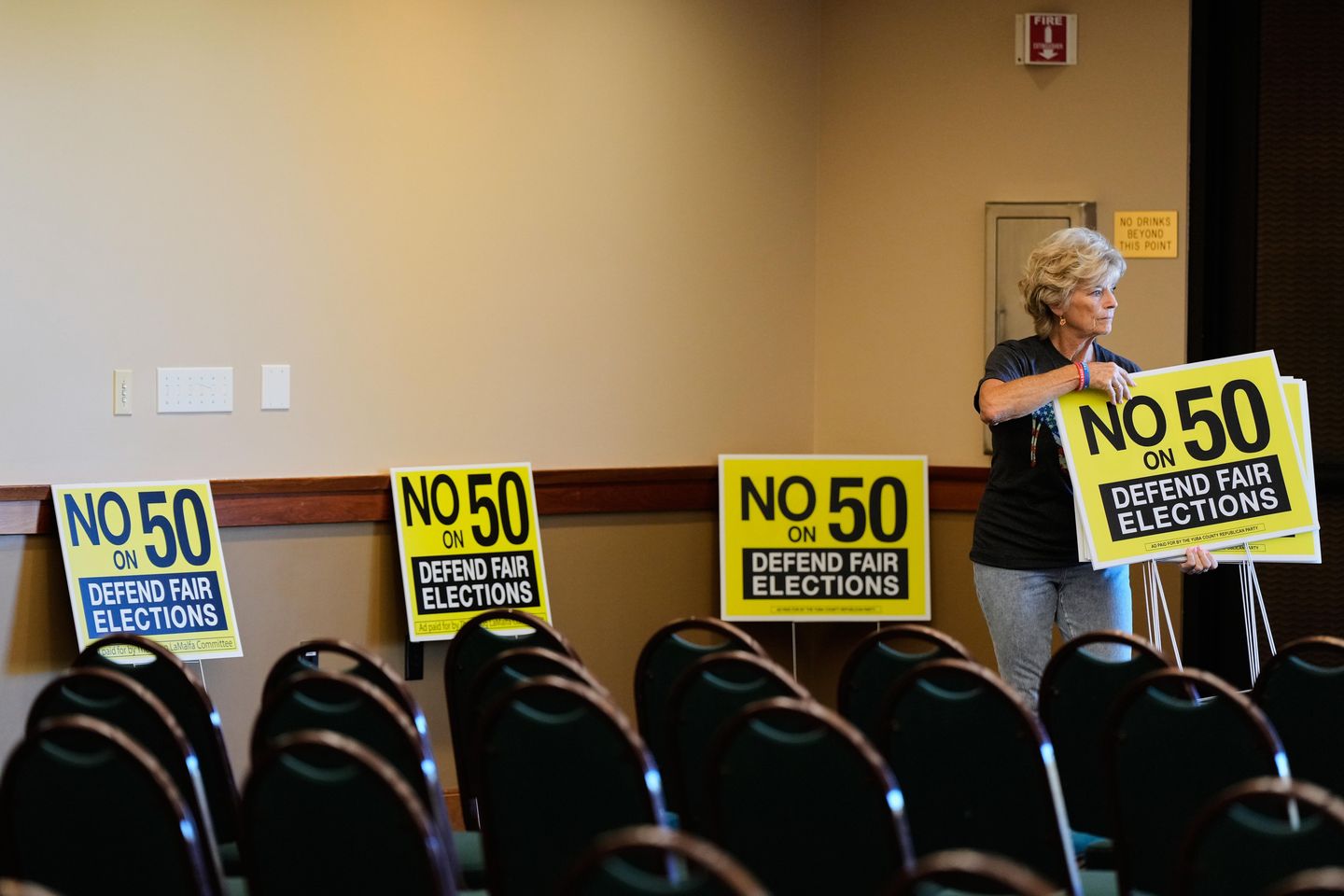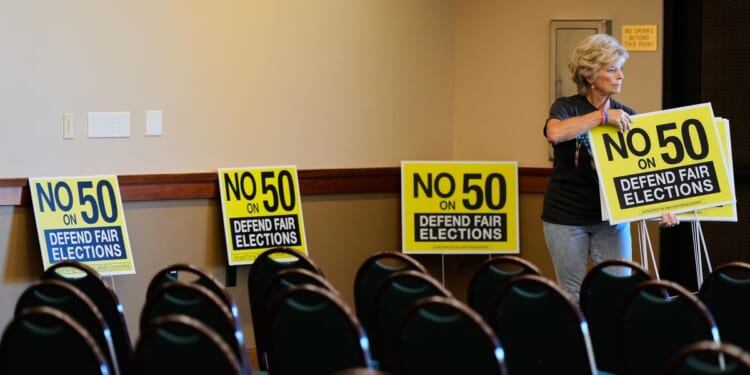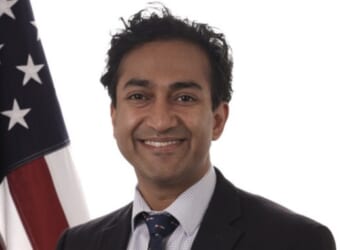
REDDING, Calif. — In a stretch of Northern California known for farming, ranching and a rural way of life, residents worry a ballot measure to redraw U.S. House maps is all but certain to dilute what little political power they possess in the heavily Democratic state.
If Proposition 50 passes, voters in three northern counties that went strongly for President Trump in the last three elections would share a representative with some of the state’s wealthiest and most liberal coastal communities. Rural voters would be outnumbered, making it unlikely for a Republican candidate to prevail.
“Most of us see it as, you know, just massive gerrymandering, taking what little representation that we had away and now we’ll have absolutely nothing,” Patrick Jones, a former Shasta County supervisor, said in a recent interview in his family’s gun shop.
Voting concludes Nov. 4 on the measure, which would create partisan U.S. House maps outside of normal once-a-decade redistricting handled by an independent commission. It’s an effort by Democratic Gov. Gavin Newsom to counter a Trump-backed plan in Texas to gain five more Republican seats. He says it’s necessary to defend democracy, but California Republicans call it a power grab that will disenfranchise voters. Republicans currently hold nine of the state’s 52 congressional seats.
In Redding, one of the largest cities north of Sacramento, bright yellow signs urging residents to defend fair elections and rural representation dot the highway. A local man recently led a one-person protest in front of City Hall, while more than 150 others showed up at a rally to reject what they see as a scheme by Democrats to take away their voices.
They face an uphill battle in the state where registered Democrats outnumber Republicans by nearly 2-to-1. Democrats have returned nearly twice as many ballots. Labor unions and other Democratic allies have mobilized hundreds of volunteers to reach voters in solidly blue areas like Los Angeles with millions of voters. Two weeks before Election Day, just about 7,000 ballots had been returned in Shasta County, county clerk Clint Curtis said. He expects lower turnout than normal.
TV advertising opposing the measure — a key investment in the sprawling state — has largely dried up.
Under the new maps, voters in Shasta, Siskiyou and Modoc counties — all conservative strongholds in the rural north — would be in the same congressional district with Marin County, which sits just across the Golden Gate Bridge from San Francisco.
Mr. LaMalfa’s current district includes farms that grow rice, olive and other tree nuts, and ranching is prevalent in the farthest northern reaches. Lassen National Volcanic Park, historic Shasta Dam and snow-capped Mt. Shasta are defining features. Redding has a population under 100,000. Distrust of government and belief in election conspiracies are common. In 2024, 67% of voters in Shasta County supported Mr. Trump.
Marin County, meanwhile, went 80% for Democrat Kamala Harris. The median household income tops $140,000 — roughly double that of Shasta County. It’s part of a district that runs north up the Pacific coastline to Oregon and is known for redwood forests, wine production and cannabis farms. It’s represented by Democratic Rep. Jared Huffman.
Mr. LaMalfa, a rice farmer, opposes the proposition and has spent at least $63,000 from his campaign fund to reach voters through text messages and yard signs. He also gave $50,000 to a statewide “no” campaign.
Mr. LaMalfa’s supporters say they appreciate his conservative stances and push for an important new water storage project.
“I pretty much love the guy,” said Bob Braz, a Redding area native who owns a bait shop. “I stand for almost all the things that he’s done.”
Those who don’t know much about Mr. LaMalfa’s record said they trust him because of his background.
“I don’t hear much about him but he’s a farmer,” said Liz Jacobs, who moved from the Bay Area to Redding 20 years ago. She added: “I don’t know about somebody from the Bay Area with their progressive ideas.”
Mr. Newsom and other Democrats say the measure is a tool to fight Mr. Trump’s agenda and counter Republican efforts to pick up seats elsewhere. Even if it passes and Democrats win five more seats, it may not help the party retain the House. Republicans in Missouri, North Carolina and Indiana are joining Texas in trying to draw more winnable seats in the 2026 midterms. Lawmakers in Virginia, meanwhile, are back in session to work on a map more friendly to Democrats. All of the efforts are sure to face legal challenges.
“This is not the fight we want to fight. This was not our battle,” Mr. Newsom said recently. “This is in reaction to something unprecedented that happened.”
But voters in Redding see it as another way to silence their voices.
They have long felt neglected by the Democratic-controlled Legislature in Sacramento, which they blame for raising the cost of living and infringing on local control. Lawmakers, for example, banned counties from hand-counting ballots in most cases after Shasta County leaders voted to get rid of their vote-counting machines in 2023.
Some said they worry that national Republicans won’t put up a fight to hold the seats if the measure passes.
“You would have to spend a huge amount of money to reach your base,” said Mr. Jones, the former county supervisor. “And they’re just simply not going to want to waste that amount of money because it would be better spent throughout the country elsewhere.”









